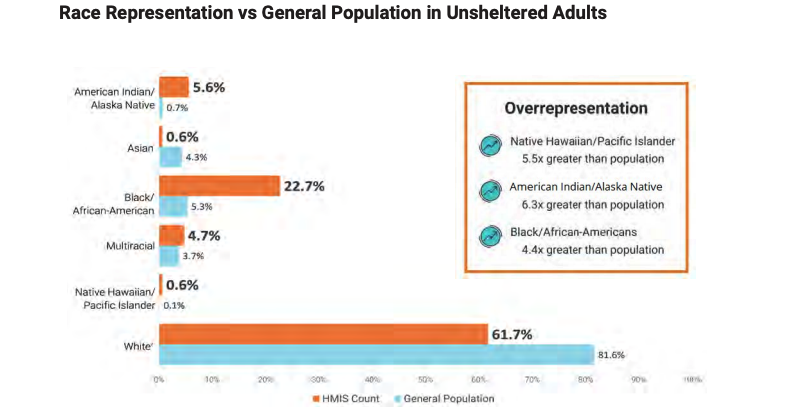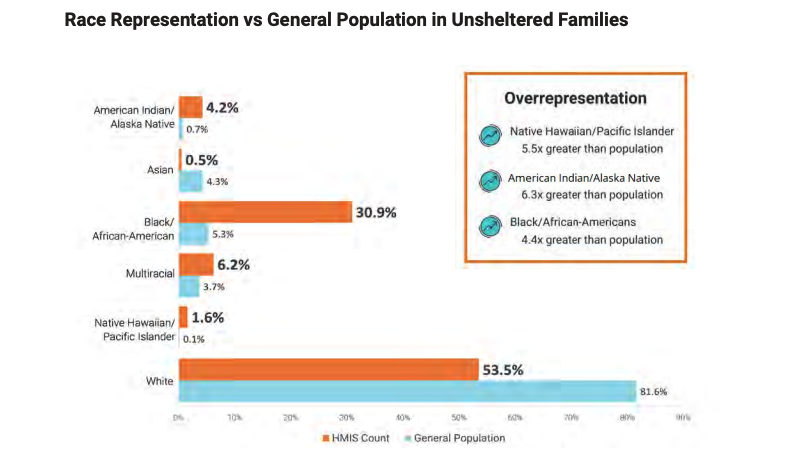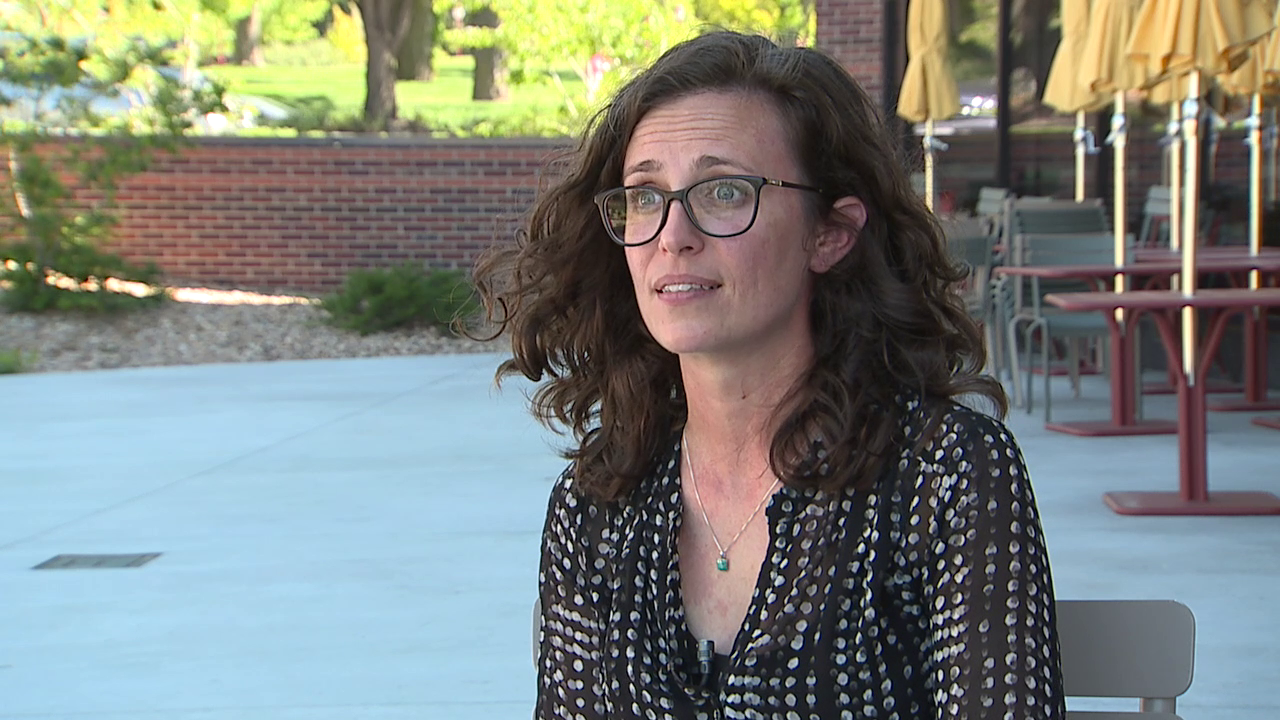
The number of people who experienced homelessness for the first time doubled from 2020 to 2021 – a “direct result” of the coronavirus pandemic, according to the Metro Denver Homeless Initiative.
Those are staggering numbers no doubt, but they're an undercount, as there is no full list of everyone experiencing homelessness across the Denver metro region, according to the organization which conducted the survey, released back in January.
In this 360 In-Depth report, we’ll dive deep into:
- What the data shows
- What’s contributing to the homeless crisis
- Who is experiencing homelessness
- What advocates say needs to happen
- What’s worked in other cities and could it work here?
Let’s look at the numbers. 📈
Between July 1, 2020 and June 30, 2021, more than 32,000 people across the Denver metro area – 32,223, to be exact – sought and accessed services related to homelessness, according to the January State of Homelessness report, which compiled information obtained through the Homeless Management Information System (HMIS).
The numbers are an undercount, however, as the data only includes people and households engaging in services, and the number of people experiencing homelessness is higher than what is officially reported, the Metro Denver Homeless Initiative (MDHI) states.
While there are differences in counts used to compile the data presented in the report, it has remained consistent in one key aspect: Those experiencing homelessness tend to be Black, Indigenous or People of Color (BIPOC), pointing to the racial inequality that exists when it comes to homelessness.
Let’s break down those numbers even further.
The HMIS showed American Indians/Alaskan Natives experienced homelessness more than any other group compared to their population size (this group represents only 0.7% of the general population but experienced homelessness rates of 5.6% - more than a five-fold increase). Native Hawaiians/Pacific Islanders experienced 5.5 times the rate of homelessness compared to their population size (0.1%), while Blacks experienced homelessness at rates four times higher than their population size (22.7% vs 5.3%).

Whites – despite having the biggest share of people experiencing homelessness at 61.7% of the total, make up the majority of the population at 81.6%.
Men had the highest rates of homelessness compared to women (73.2% vs 25.4%) or transgender people (0.6%) and people who did not identify with either gender (0.4%), according to the report.
Adults experiencing homelessness ranged from 25-64 years old.
Families experiencing homelessness were another matter entirely, according to the findings from the HMIS data.
While BIPOC populations made up the large share of homelessness compared to their overall population size, unsheltered families consisted mostly of women (69.3%) compared to men (30.6%).
About 40.3% of families experiencing homelessness were between the ages of 25 to 34, according to the data.

What’s causing the homeless crisis?
The MDHI is abundantly clear: Lack of affordable housing is the leading cause of homelessness in the Denver metro area.
This finding runs opposite of what most of the public believes to be the root cause of the homelessness problem.
Surveys on the public's view on homelessness show the general public attributes homelessness to matters of individual choices or circumstance, like drug/alcohol addiction and mental illness, or chronic health conditions, as the general causes.
Actual data from the Point-in-Time (PIT) count, however, showed the top reasons for homelessness in the Denver metro are loss of a job or inability to find work, high housing costs, or relationship/family break-ups.
The report underlines that, “While physical and/or mental disabilities, substance use, unemployment or underemployment, and various other challenges are part of the broader picture of homelessness, a lack of affordable, appropriate housing continues to be the foremost challenge.”
To illustrate how just much housing plays a part when it comes to homelessness, the MDHI report uses statistics from the National Community Reinvestment Coalition, which show Denver ranked second as the most gentrified city in the U.S. from 2013-2017, with Colorado as a whole ranking in the ninth highest housing wage in the U.S., with $27.50/hour required for a 2-bedroom rental and an annual wage of $57,2000, per the National Low Income Housing Coalition.
As of June, the average price of a single-family home in the Denver metro went for $810,415, while a condo was closing at around $504,193 on average – housing prices that young families simply aren’t able to afford, let alone someone trying to find a way out of homelessness.
IN-DEPTH | What June’s housing report means for buyers, sellers in the Denver metro
The MDHI report also points to other factors that are contributing to the homelessness crisis in the metro region: Economic conditions, systematic racial inequities, the COVID-19 pandemic, trauma, as well as family and relational dysfunction.
The coronavirus pandemic, in particular, is putting people at risk of losing housing, according to the report. The 2021 PIT count showed a 40% increase in those staying in emergency shelters across the metro and a 99% increase in those identifying as newly homeless.
The report also outlined a recent analysis of census data from the National Equity Atlas, which showed 61,000 households were behind on rent in Colorado, totaling an estimated $192,500,000 on monthly rent that was still owed by the time it was due – the majority of which is the result of loss of income or unemployment due to the pandemic.
Those out on the streets are just the homeless you see.
Will Bengert recently sat down with Denver7 to talk to us about the homeless crisis. Clear-eyed, thoughtful, and sober, Bengert told us about his life out on the streets, about the many nights he spent underneath a tree at Cheesman Park, and about the many tears he’d shed on those blades of grass.
Bengert, who recalled how addiction followed him ever since his dad would pay him in beer for mowing the lawn in the sixth grade, told us how that way of life led to four years in prison for a string of charges including drug possession, grand theft auto and second-degree burglary. He would eventually get out on parole into sober living after nearly four years and now works as an advocate for the Saint Frances Center in Denver to help others get off the streets.

The MDHI cautions, however, that while people like Bengert are ones many people see when discussions about homelessness take place – the visible homeless, as the organization identifies them – there is an entire subset of people that remain in the shadows including children, families, youth, and others who people would not associate with experiencing homelessness.
“Due to visibility of many of these individuals, the general public forms many of its assumptions about those experiencing homelessness based on this population. However, this is but one of the faces of homelessness and is not representative of the entire population,” the DMHI report states.
The data shows 10,870 adults, 1,031 families, 954 youths and 21,679 households accessed services related to experiencing homelessness.
Solving the homeless crisis.
When it comes to finding ways on how to solve the homeless crisis here in Denver metro area, it really depends on whom you ask.
On the one hand, there are organizations like Citizens for a Safe and Clean Denver, which advocate for proactive policing and enforcement of Denver’s decade-old camping ban, which voters overwhelmingly rejected to overturn in 2019.
During a recent interview with Denver7, one it is members, Lori Greenly, pointed to an apparent drug deal that was happening outside Union Station as well as another person having a mental health crisis, as reasons, she says, that play into the decision of families avoiding downtown Denver altogether.
She does, however, recognize, that homelessness, addiction, and crime are separate issues that can, at times, intersect.
Which is why, she says, Citizens for a Safe and Clean Denver is pushing for a bold and controversial policy – forced rehabilitation, as has been proposed in California and which organizations like Human Rights Watch strongly oppose.
Speaking to Denver7 near the location where he used to sleep at Cheesman Park, Bengert said he credits forced rehabilitation for his stability and his success today.
Other experts, though, disagree with a forced rehabilitation model. Instead, they argue that getting people into housing — regardless of addiction or mental health issues — is the first and most important step.
“Housing is the response to homelessness,” said Katie Calhoun, a PhD candidate at the Center for Housing and Homelessness Research with the University of Denver. “There’s a lot of talk around this issue of substance use. It’s just as likely that substance use is a response to the traumatic experience of homelessness than it led to homelessness.”

Calhoun advocates for a policy called “housing first,” which pushes to get people off the streets and into homes with no strings attached. She acknowledges that it may take longer to see results; but she argues the positive outcomes will be more likely to stick.
“What the research shows is that people with that choice are more likely to engage in treatment. If they have some place to stay that night, they’re able to more actively engage in treatment frequently, as well as feel that it’s a more meaningful engagement,” she said.
Prioritizing resources for affordable housing is key to solving the homelessness crisis in Denver, she argued.
What’s worked in other cities and could it work here?
Houston is one such city which has tackled homelessness with a “housing first” approach – and it’s worked so far. The city has seen a 63% reduction in homelessness since 2011, according to officials from Coalition for the Homeless of Houston/Harris County.
It hasn’t happened overnight, however, and homeless advocates in Houston say other cities shouldn’t expect such policies to have an immediate effect – though the success over the long run is what makes the effort worth it.
Earlier this month, the coalition told E.W. Scripps they’ve seen a 90% success rate with this method so far.
“Success to us means you have someone in permanent supportive housing and you do whatever it takes to keep that person in permanent supportive housing,” said Ana Rausch, vice president of program operations for the Coalition for the Homeless of Houston/Harris County.
Rausch said communication between partner organizations is the key to the success of these programs.
“Start talking to each other," Rausch said. "I would say that's a big one, because that's what we were doing wrong many years ago."
Atlanta also saw success with a housing first approach. In early June of this year, the city reported a nearly 40% drop in homelessness since the pandemic began, according to the city’s NPR affiliate, WABE-FM.
The decline in homelessness was attributed to an allocation from a surge in federal relief funds, which the city used to coordinate an effort to provide hundreds of unhoused people with housing.
In the Denver metro, funding to address the homelessness crisis hasn’t been dry.
A November report from The Common Sense Institute (CSI) – a non-partisan research organization dedicated to the protection and promotion of Colorado’s economy – found that Denver spends about half-a-billion dollars each year to prevent and resolve homelessness, which is between $41,679 to $104,201 being spent per person experiencing homelessness per year. That money is going to shelters, services, emergency response and healthcare for people experiencing homelessness, the report states.
In comparison, according to the analysis, Denver spends about $19,202 per student per year on public education.
An editorial in The Denver Post argues that directing funds to services such as increasing shelter capacity does little to help people experiencing homelessness in the long-term. Mayor Michael Hancock’s approach to homelessness by way of sweeps doesn’t help either, the writer opined.
“Painting the problem with broad strokes buoys a narrative of filthy, unsafe, deplorable conditions that leaves a canvas of us versus them; an intractable problem to be dealt with, not one we expect our leaders to solve,” the author of the op-ed wrote.
In closing remarks, the MDHI report calls on city leaders to recognize the inequity of the homeless crisis in the Denver metro and work to make sure there’s an equitable prioritization process with the ultimate goal of “eliminating over-presentation of any one population.”
Beyond that, the report states, the homelessness response should look at the societal systems currently in place that are exacerbating the homelessness crisis: Inequities in criminal justice, child welfare, and healthcare; and work toward supporting programs that contribute to economic stability: Quality childcare, employment and education opportunities.
“Lastly, part of any equitable response includes hearing from the experts on homelessness – those with lived expertise,” the report states. “No decisions regarding addressing homelessness should be implemented without the meaningful input of individuals who have lived through or are currently experiencing homelessness.”
Bengert agrees.
“It doesn’t cost money. It doesn’t cost a lot of time. You don’t have to open up your house so they can take a shower,” he said. “But, there’s always something you can do.”
More of visual learner? View our 360 In-Depth report by clicking in the video below.
Editor's Note: Denver7 360 | In-Depth explores multiple sides of the topics that matter most to Coloradans, bringing in different perspectives so you can make up your own mind about the issues. To comment on this or other 360 In-Depth stories, email us at 360@TheDenverChannel.com or use this form. See more 360 | In-Depth stories here.



